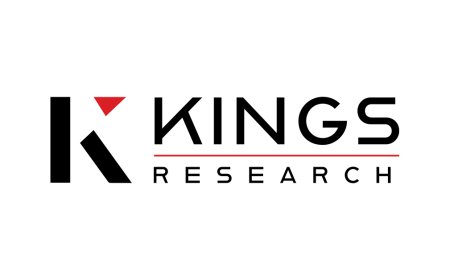Different Types of Screen Printing Inks Explained
EMDigitizing has been providing premium quality embroidery digitizing service for embroidery digitized by experienced digitizers since 2018.

Screen printing has remained a dominant method of applying designs to various surfaces for decades. One of the most critical elements of screen printing is the screen printing inks used in the process. Whether you're new to screen printing or looking to enhance your understanding of this versatile medium, knowing the different types of inks available can make a big difference in the quality and durability of your final product.
This guide will break down the different types of screen printing inks, explaining their properties, uses, and what makes them unique. We will also take a closer look at metallic inks, which are often used to add a luxurious touch to designs.
What Are Screen Printing Inks?
Screen printing inks are specially formulated to pass through a mesh stencil (screen) and transfer onto a surface, such as fabric, paper, glass, or plastic. These inks differ from traditional printing inks due to their viscosity and the way they adhere to different materials. The ink must be durable, provide excellent coverage, and remain flexible to prevent cracking or peeling after curing.
The success of a screen print largely depends on the type of ink used. Each ink type has its unique qualities that make it better suited to specific materials, design requirements, and finishes. Let’s dive into the different types of Screen Printing Inks and explore what makes them ideal for particular applications.
Types of Screen Printing Inks
1. Plastisol Inks
Plastisol inks are perhaps the most widely used in the screen printing industry, especially for textiles like t-shirts and other clothing items. These inks are PVC-based and do not dry unless exposed to high heat, making them incredibly user-friendly for beginners and professionals alike.
- Pros: Excellent opacity, vibrant colors, suitable for printing on both light and dark fabrics.
- Cons: Plastisol inks can feel heavy or rubbery on fabric, and they are not eco-friendly due to their PVC content.
Plastisol inks require curing at high temperatures, typically around 320°F (160°C), to ensure the print bonds properly with the fabric and remains durable after washing.
2. Water-Based Inks
Water-based screen printing inks are a popular alternative to plastisol, especially for those looking for a softer feel and a more eco-friendly option. These inks penetrate the fibers of the fabric, creating a smooth, breathable finish.
- Pros: Soft to the touch, eco-friendly, suitable for light-colored fabrics.
- Cons: Water-based inks tend to have lower opacity and may not work as well on dark fabrics without additional steps like discharge printing.
Water-based inks are ideal for lightweight fabrics, and their environmentally friendly composition makes them a great choice for brands prioritizing sustainability.
3. Discharge Inks
Discharge inks are a special type of water-based ink designed for printing on dark fabrics. Instead of laying the ink on top of the fabric, discharge inks remove the fabric’s existing dye and replace it with a new color. This process leaves the fabric soft, as there’s no thick layer of ink sitting on top of the fibers.
- Pros: Great for dark fabrics, soft to the touch, creates vibrant prints.
- Cons: Discharge inks work best on 100% cotton fabrics and may produce inconsistent results on synthetic blends.
While discharge inks are an excellent choice for creating soft, colorful designs on dark fabrics, they require careful handling and precise curing conditions to achieve the best results.
4. UV-Curable Inks
UV-curable inks are primarily used for non-porous surfaces, such as glass, metal, or plastic. These inks dry instantly when exposed to ultraviolet (UV) light, making them ideal for high-speed production and detailed prints.
- Pros: Fast curing time, durable, ideal for hard surfaces.
- Cons: Requires specialized UV light equipment for curing, limited use on fabrics.
UV-curable inks offer vibrant, high-detail results and are commonly used in industries like electronics, signage, and packaging.
5. Metallic Inks
Metallic inks are designed to create shiny, reflective designs by incorporating metallic pigments like aluminum or bronze. These inks are often used to add a luxurious, eye-catching effect to printed products, making them popular for promotional items, high-end apparel, and packaging.
- Pros: Reflective, eye-catching finish, works on various materials.
- Cons: Higher cost, may require additional curing and handling.
Metallic inks can be used in conjunction with other ink types, such as plastisol or water-based inks, to create unique effects that elevate the overall look of a design.
6. Glitter Inks
Glitter inks are a type of specialty ink that adds sparkle to designs through tiny reflective particles suspended in the ink. These inks are commonly used to create fun, attention-grabbing designs for promotional products, children’s apparel, and event merchandise.
- Pros: Fun, attention-grabbing, versatile.
- Cons: Glitter inks can be more challenging to work with, as the glitter particles can sometimes clog the screen.
Glitter inks are available in a variety of colors and can be combined with other ink types to create dynamic, layered designs.
7. Eco-Friendly Inks
With an increasing focus on sustainability, eco-friendly screen printing inks have gained popularity. These inks are free from harmful chemicals like phthalates and PVC, making them safer for both the environment and the people who handle them.
- Pros: Environmentally friendly, safer to work with, high-quality results.
- Cons: May have a higher price point, and some eco-friendly inks require more precise curing.
Eco-friendly inks are available in both water-based and plastisol varieties, offering print shops more sustainable choices without sacrificing quality.
The Role of Metallic Inks in Screen Printing
Among the specialty screen printing inks, metallic inks hold a special place for their ability to create high-impact designs that catch the eye. Whether you're looking to add a shimmering effect to t-shirts or create reflective packaging, metallic inks offer a unique, luxurious finish.
How Do Metallic Inks Work?
Metallic inks are made by suspending tiny metallic particles, such as aluminum or bronze, in the ink. When applied through the screen printing process, these particles align in a way that reflects light, creating a shiny, metallic effect.
Metallic Inks are versatile and can be used on textiles, paper, plastic, and even glass, making them ideal for a wide range of products. However, they require special care during application and curing to ensure the best results.
Popular Uses for Metallic Inks
- Fashion: Metallic inks are frequently used in the fashion industry to add a touch of glamour to garments like t-shirts, jackets, and accessories.
- Packaging: Luxury brands often use metallic inks to enhance product packaging, adding an upscale, premium feel.
- Promotional Items: Companies use metallic inks on promotional products like bags, notebooks, and event merchandise to make their branding stand out.
Choosing the Right Screen Printing Ink for Your Project
Selecting the right screen printing ink for your project can significantly impact the outcome. Consider the following factors when choosing an ink:
1. Material Type
Different inks work better on certain materials. For example, plastisol inks are ideal for textiles, while UV-curable inks are perfect for hard surfaces like glass or plastic.
2. Desired Finish
If you want a soft, breathable print, water-based inks are the best option. For a raised, textured finish, plastisol or metallic inks may be more appropriate.
3. Opacity and Coverage
For printing on dark fabrics, you’ll need inks with high opacity, such as plastisol or discharge inks. Water-based inks may require additional steps to achieve the same coverage on dark materials.
4. Environmental Considerations
If sustainability is a priority, choose eco-friendly or water-based inks that are free of harmful chemicals like PVC and phthalates.
FAQs About Screen Printing Inks
What is the best ink for printing on dark fabrics?
For dark fabrics, plastisol inks or discharge inks are the best choices. Plastisol inks provide excellent opacity, while discharge inks remove the fabric dye and replace it with a new color, leaving the print soft to the touch.
Can metallic inks be used on all surfaces?
Metallic inks can be used on various surfaces, including textiles, paper, plastic, and metal. However, they may require special curing processes depending on the material to ensure proper adhesion.
What is the difference between water-based and plastisol inks?
Water-based inks penetrate the fibers of the fabric, creating a softer, more breathable print, while plastisol inks sit on top of the fabric and provide better opacity and durability.
Are eco-friendly screen printing inks as durable as plastisol inks?
Yes, many eco-friendly inks offer the same level of durability as plastisol inks. However, they may require more precise curing and handling to achieve the best results.
Why use metallic inks in screen printing?
Metallic inks are used to create eye-catching, reflective designs. They are ideal for high-end fashion, luxury packaging, and promotional items that need to stand out from the crowd.
What's Your Reaction?



















